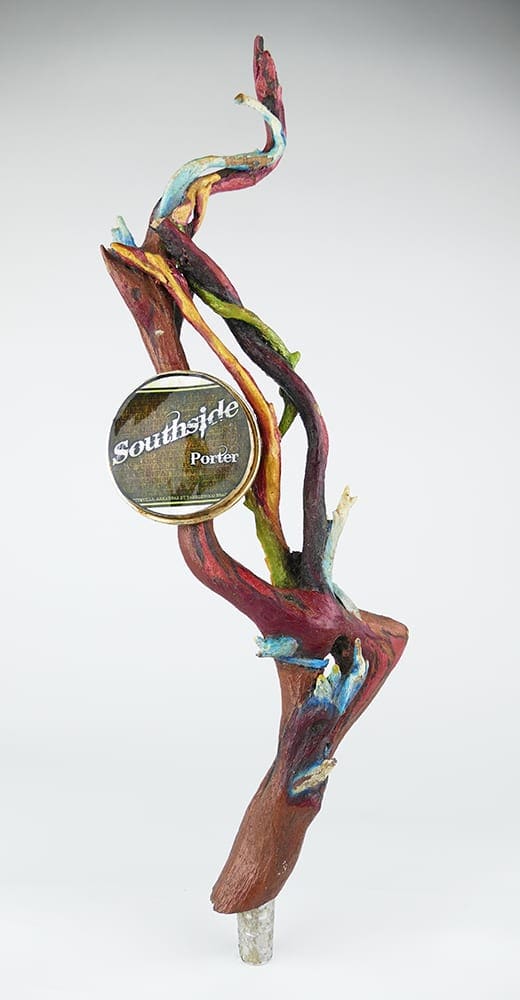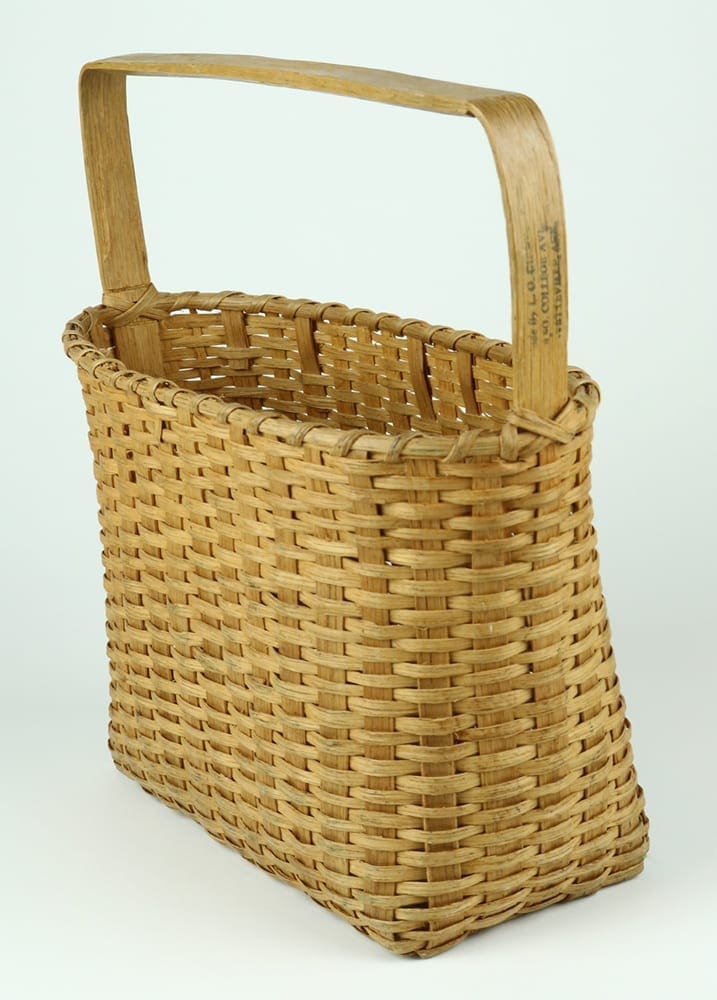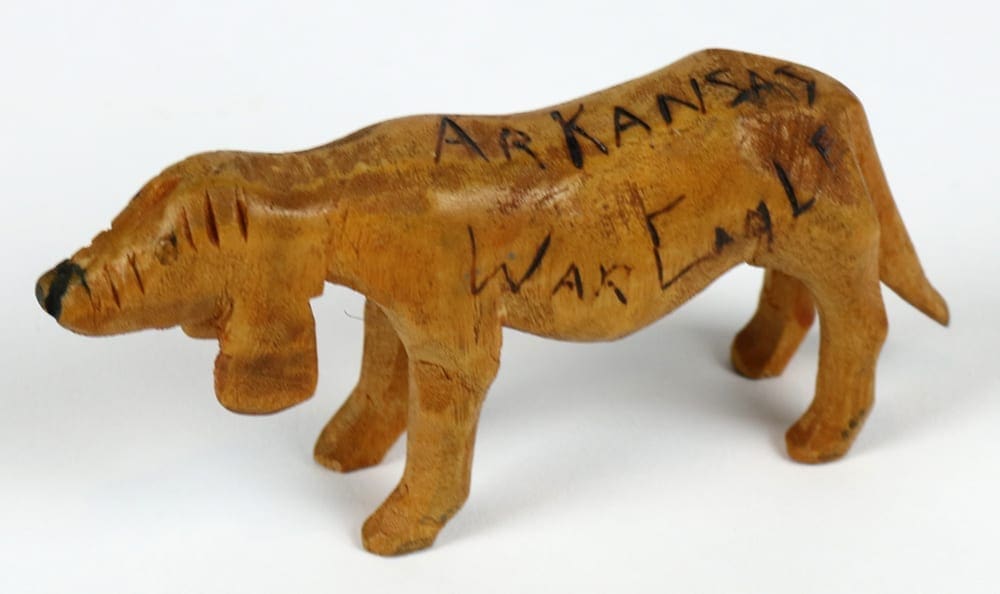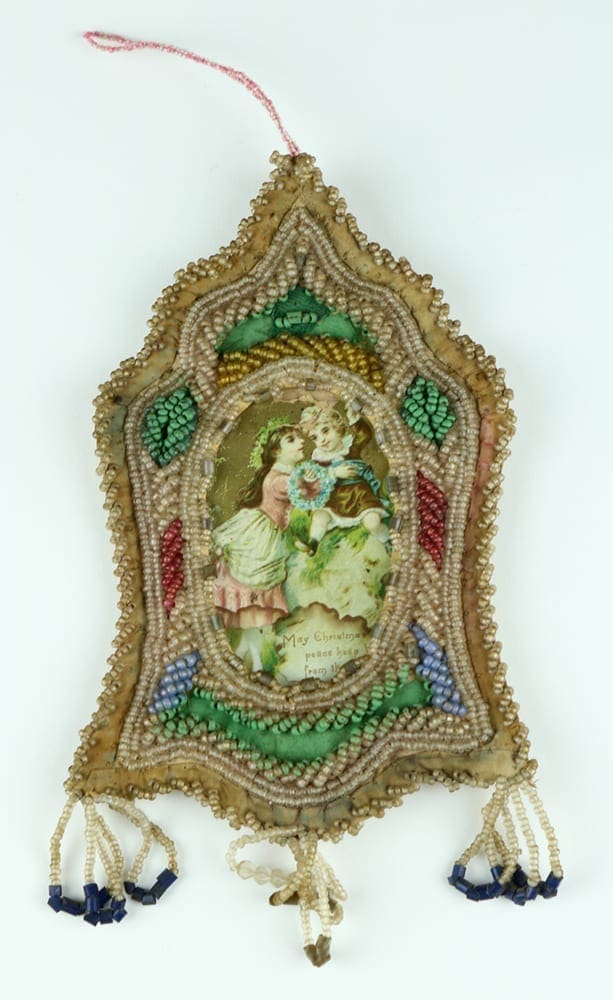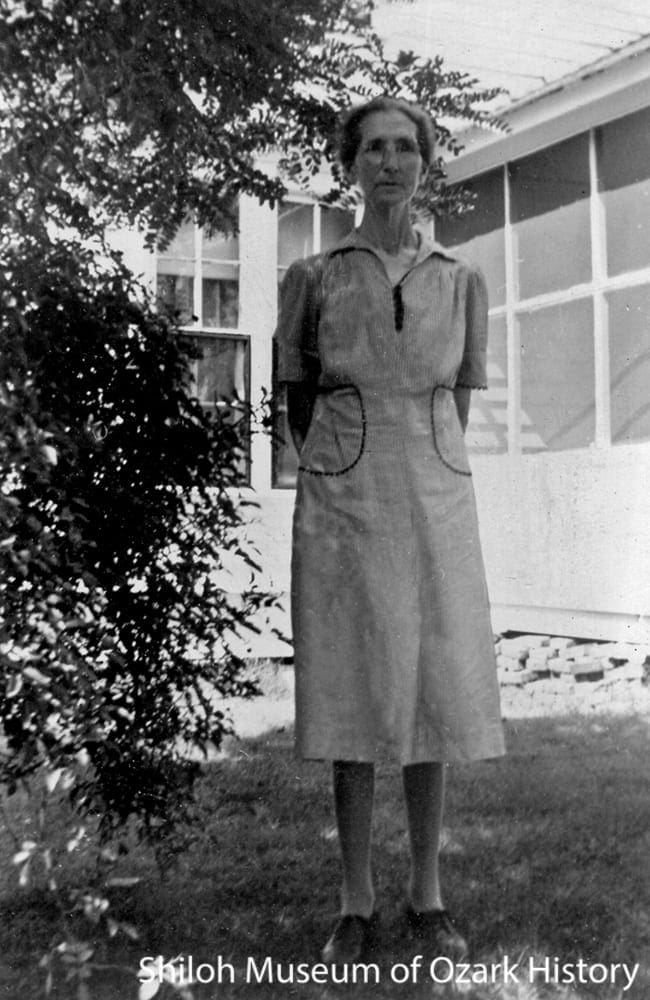Tap Handle
J. T. Wampler has been a photographer for Northwest Arkansas Newspapers for almost two decades. Taking a name from a local creek, he opened Tanglewood Branch Brewing Company located at the intersection of South School Avenue and Fifteenth Street in Fayetteville in September 2011. Initially he sold food made from local ingredients along with local and regional beers. In March 2012 Wampler obtained brewing permits and by the end of May, he was serving in-house brewed beer. However, by the end of 2013, the business was in jeopardy. A fundraising campaign raised over $21,000, allowing Tanglewood to remain open until September 2014..
This tap handle was made for Southside Porter, one of Tanglewood’s most popular brewed beers. Wampler commissioned artist Rae Russell to create original tap handles for all of Tanglewood’s in-house beers. Russell also painted “Bountiful Fayetteville,” the PIGshibition sculpture in front of Fayetteville’s Clinton House Museum.
Donated by J. T. Wampler
J. T. Wampler has been a photographer for Northwest Arkansas Newspapers for almost two decades. Taking a name from a local creek, he opened Tanglewood Branch Brewing Company located at the intersection of South School Avenue and Fifteenth Street in Fayetteville in September 2011. Initially he sold food made from local ingredients along with local and regional beers. In March 2012 Wampler obtained brewing permits and by the end of May, he was serving in-house brewed beer. However, by the end of 2013, the business was in jeopardy. A fundraising campaign raised over $21,000, allowing Tanglewood to remain open until September 2014..
This tap handle was made for Southside Porter, one of Tanglewood’s most popular brewed beers. Wampler commissioned artist Rae Russell to create original tap handles for all of Tanglewood’s in-house beers. Russell also painted “Bountiful Fayetteville,” the PIGshibition sculpture in front of Fayetteville’s Clinton House Museum.

